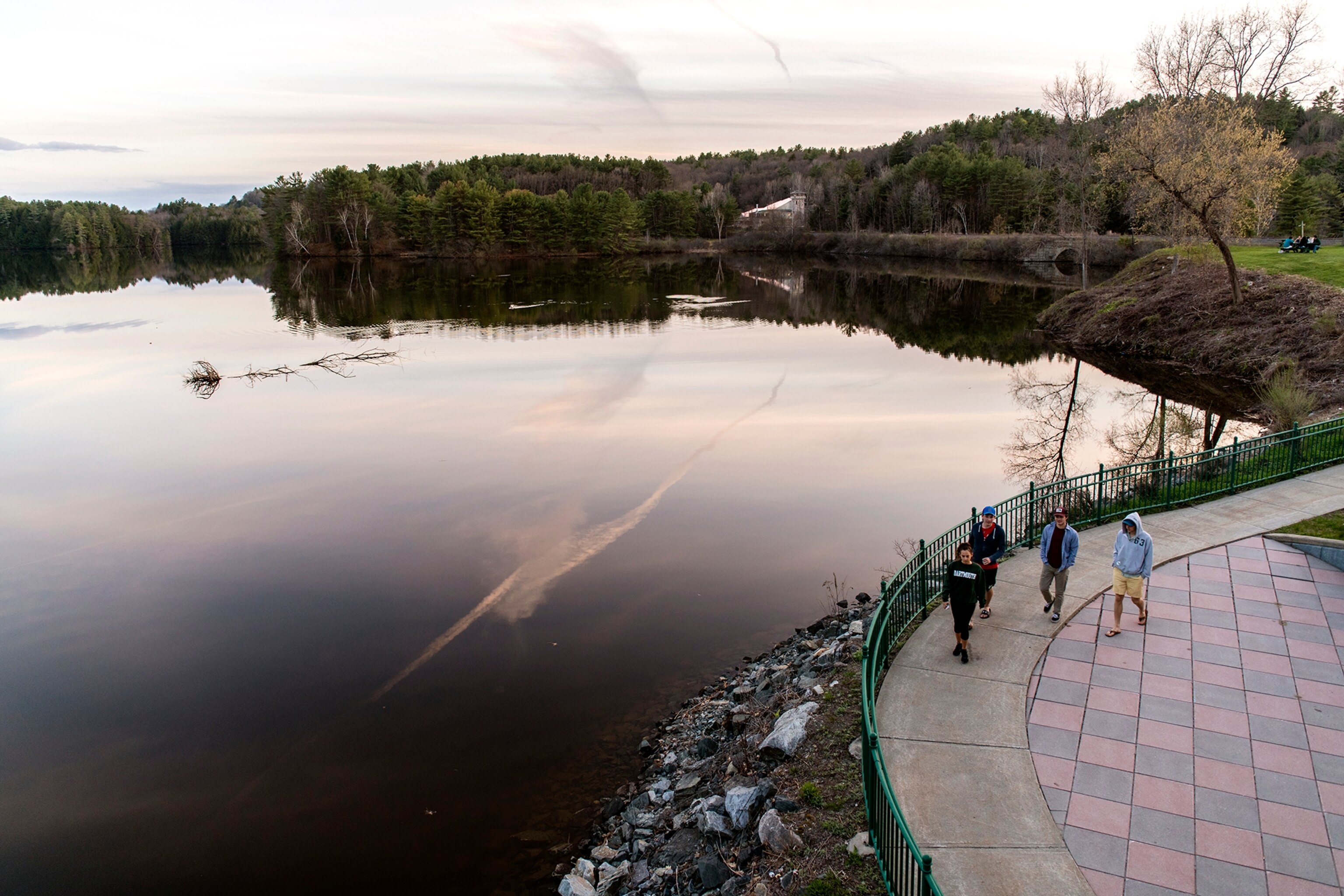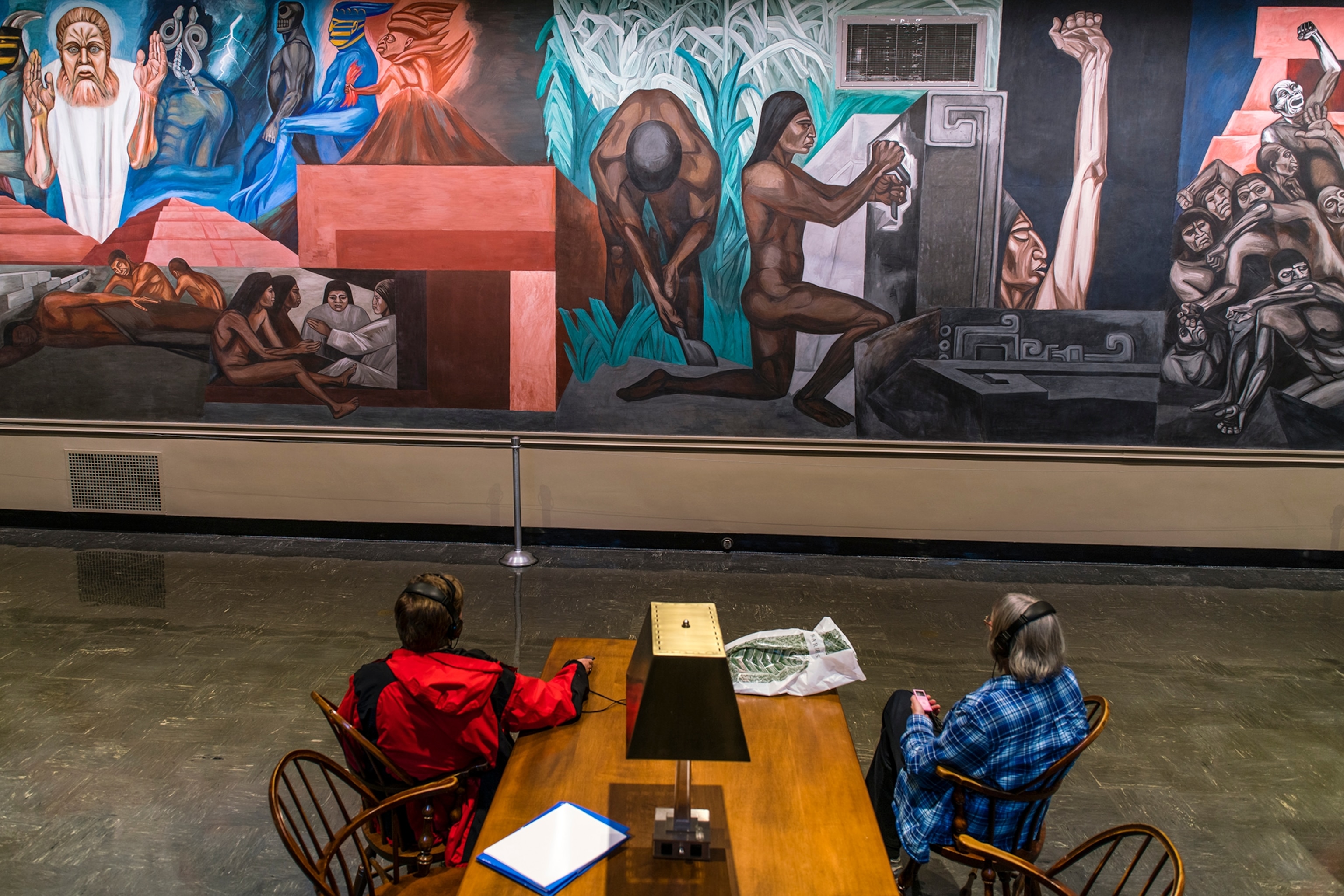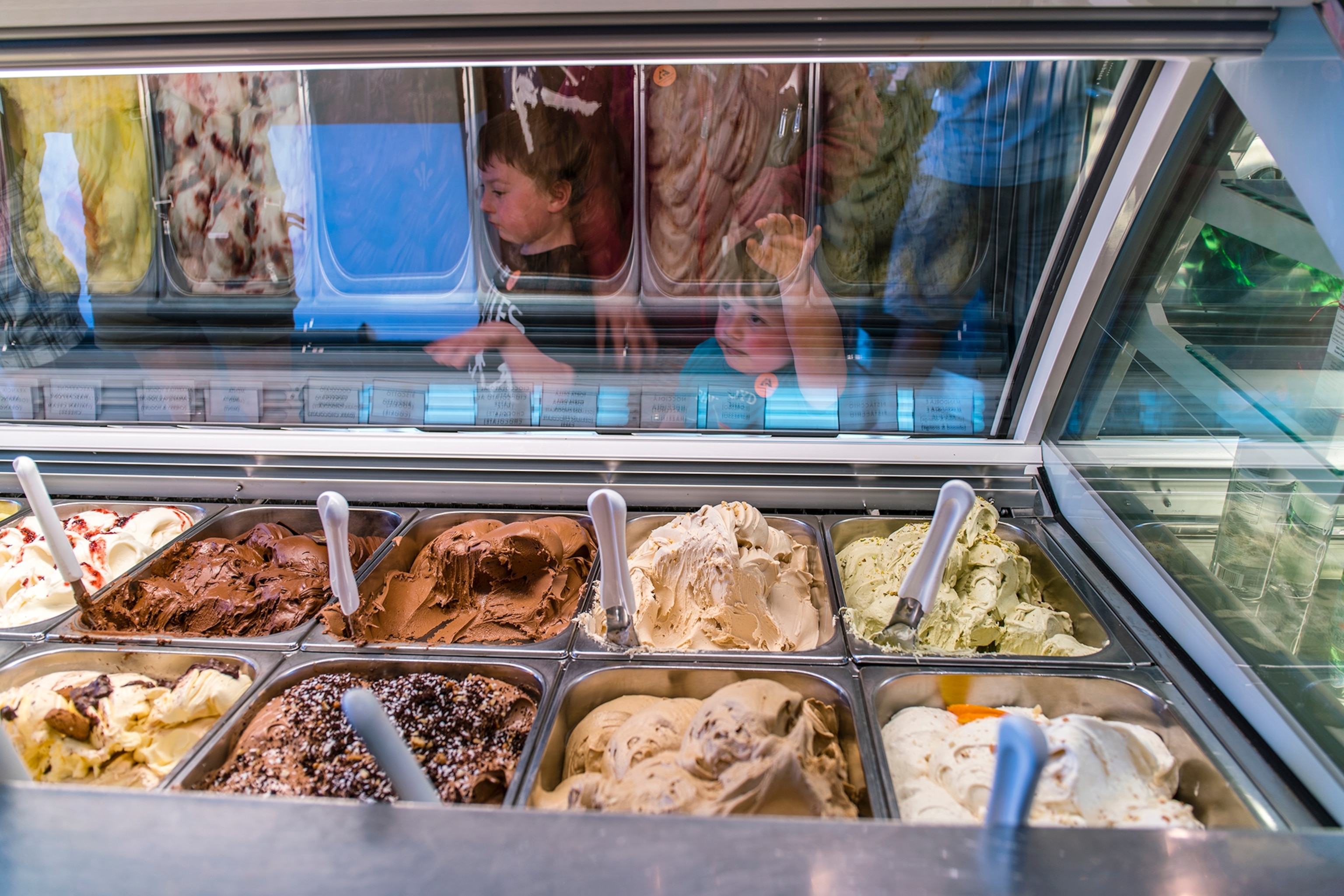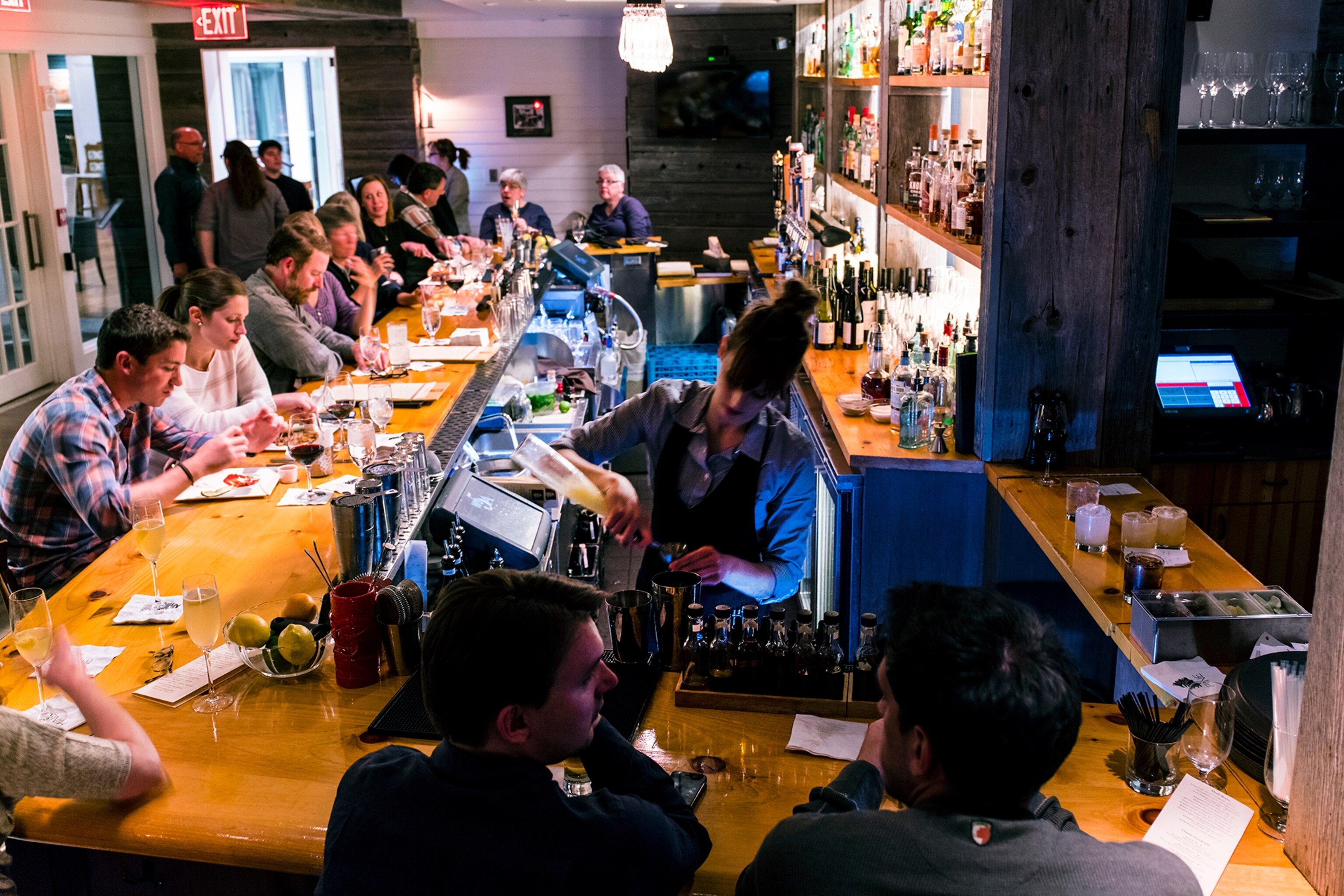Playing Ivy League in Hanover, New Hampshire
This charming town is home to Dartmouth, portions of the Appalachian Trail, and a picturesque Main Street.
“Are you OK with the hurl over there?”
Though I had a couple of beers the night before, I’m not exactly queasy. Turns out, Susan Brown is only asking her workmate Larry Antonuk about the thin branches of sorghum available.
Larry and Susan are “broom squires.” They make brooms.
I’m at a broommaking workshop held at the Enfield Shaker Museum, which is a short drive from Hanover, New Hampshire, home of Dartmouth College. Learning is in the air around here, I figured.
Plus, hey, I need a broom.
Larry, who’s “sort of a scientist,” shows me the six steps of making a Shaker broom in a couple of hours. “A proper broom can stand on its own,” he says. He has confidence all will go well. “The only difference between a good and bad craftsperson is how well they hide their mistakes.”
Susan and Larry aren’t Shakers. The last of that celibate community relocated from Enfield in 1923. But the museum here includes the biggest Shaker dwelling house ever built, filled with innovations the Shaker community worked on (pivot bases for chairs so you could lean back without falling, a sockmaker done by turning a crank—practical folks).
I wrap wire around strips of sorghum around a broom handle, press a foot pedal of a nearly 200-year-old “kick winder,” and thread string to hold it together. The result is one heavy broom, but it looks good and—after a few tries—we manage to balance it on the wood floor.
“There’s a real satisfaction from this,” Susan says, describing the “broom zone” once we’re done. “You sit back and see what you did.”

I’m in Hanover for a couple of days to “play Ivy League.” The town of 11,000 is the smallest Ivy League town. Hemmed in by rolling green hills on the Vermont border, Hanover is home to patches of the Appalachian Trail, and pretty much everything on the Dartmouth campus—archives, events, the Bema (“big empty meeting area”)—is open to the public too. Not your average Ivy League town.
At the Baker-Berry Library, a steepled red-brick building on the main square, I visit the clock tower, rimmed by a tight four-plank catwalk. (The clock tower will be closed for renovations this summer.) Above are superb views from just below a funny weather vane of a couple of figures. One is Samson Occom, a Native American preacher who raised money—unwittingly as it turns out—to establish the school in 1769. A library receptionist notes the Occom archives are in the Rauner Library, so I go on a whim to look him up.
Inside, a huge four-story glass cube sits inside the former theater space. The Cat in the Hat peers out from a corner above. (Dr. Seuss is a Dartmouth grad.)
Asking about Occom, I get handed a box of materials—tiny journals and sermons he wrote from the 1760s until his death in 1792. Soon I’m thumbing through 248-year-old journals with nearly undecipherable handwriting. This is fun.

Rotating exhibits made by students are on the mezzanine. One, put together by six freshmen students with humor, shows how Dartmouth med students in the early 1800s were admitted grave robbers, a justifiable act at the time, the students suggest. Two centuries later, a medical student wrote a poem to his cadaver.
Do we ponder his life, his mind, and his soul
While his fluids leak out and collect in a bowl?
Hanover’s Hood Museum of Art is closed till 2019 for renovations (a satellite location downtown opens this September), but its most famous attraction—a mural cycle called “The Epic of American Civilization”—is always available to see for free, till midnight, in the Baker-Berry Library basement research area.

“We’re suddenly not just in New Hampshire anymore,” says Amelia Kahl about seeing the murals. She’s a curator from the Hood Museum of Art who gives mural tours too.
Not everyone loved the colorful murals, painted by Mexican muralist José Clemente Orozco in the 1930s. Notably alumni. One panel questions the elitism of higher education, for example; another pairs a Mexican revolutionary Emiliano Zapata character with a sullen group of North Americans outside a church and schoolhouse.
“They look like automatons,” Amelia says of the North Americans. “Zombies.”
The leafy town is nice to walk through. Passing students (and why do college students always wear shorts, even on gray drizzly days?), I make my way down to the banks of the Connecticut River. I’m too late for the Ledyard Canoe Club, which rents kayaks and canoes for $10 an hour. Everything is left open. Even the tickets still sit on the porch desk. I peek inside and it looks a bit like the set of Animal House, which is supposedly based on Dartmouth life.

I return to Main Street, lined with a guitar shop, cafes, restaurants, a farmers market on Wednesdays, bookstores. One basement burrito shop figures heavily (in its former incarnation as a tavern) in the opening of Intervention, a sci-fi novel by Julian May set in Hanover. Nancy Cressman of Left Bank Books shows me a letter she wrote May about it. We talk for an hour about local hikes, and I end up leaving with a copy of Bill Bryson’s A Walk in the Woods, about his experience on the Appalachian Trail, written when he called Hanover home.
I always enjoy the energy of being back on campuses. I’m a state school grad, and it’s always a little extra at an Ivy League school. Other than Princeton, I’ve visited all the other Ivy League schools (Harvard, Yale, Brown, Columbia, Penn, Cornell, Dartmouth). And I reckon, so far, Dartmouth is “my” Ivy League school—meaning the one I’d attend in my alternative Robert universe. (I also enjoy how it briefly joined the Republic of Vermont in the 1770s and changed the town’s name to Dresden.)

- National Geographic Expeditions
At dinner at Molly’s nearby, I sit next to a few middle-age adults I take for professors. As I wait for a pizza, I listen in to the sort of dialogue I might have expected as a student here.
“Man, last night,” says one, a bit bleary. “I had two bottles of wine and stayed up till 6 a.m. Then I had to get up an hour later for a presentation to class!”
I think I could have handled life at Dartmouth.
How to Do This Trip
I stayed at the colorful Six South Street Hotel off Main Street. Because parking can be tough at some times, I took advantage of their $18 valet parking.
Molly’s is a lively restaurant with excellent pizza and lots of life. For breakfast, try Lou’s, a diner since 1947. Music from the ‘50s plays, local ads ring the place mats, and the apple pie is homemade.
The Ledyard Canoe Club on the Connecticut River has kayaks and canoes for $10 an hour. Check the website for current hours.
You can visit Orozco’s “The Epic of American Civilization” on your own. Or to arrange a free tour, call ahead to (603) 646-1469, or visit the website. There’s also an interesting digital page on the murals where you can compare sketches with finished works.







